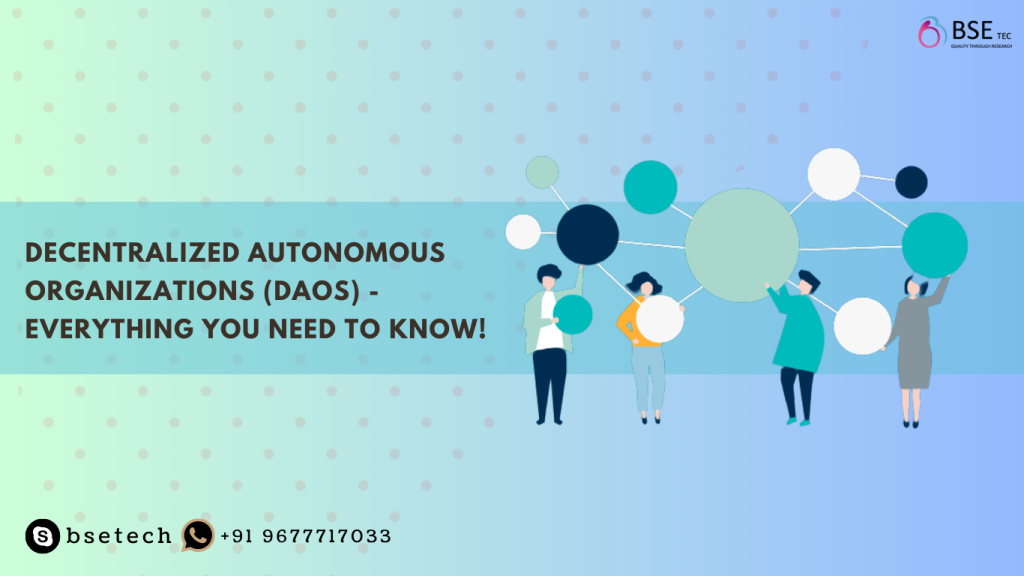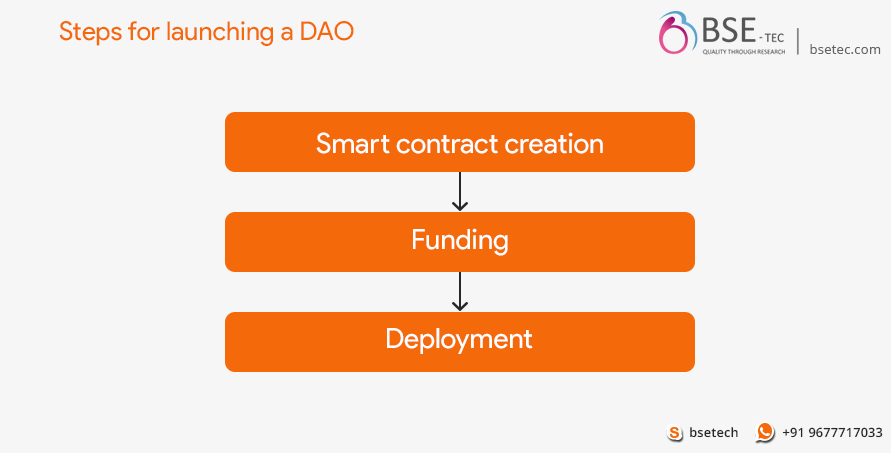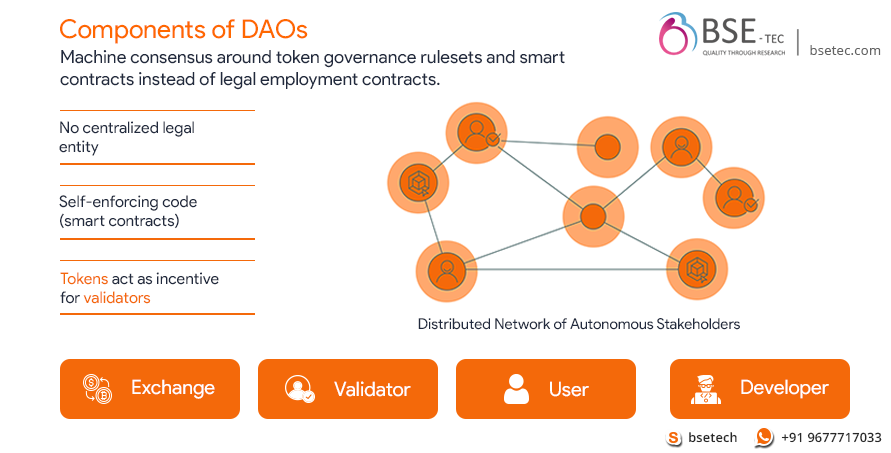Decentralized Autonomous Organizations (DAOs) – Everything you need to know!

DAOs are the most complex entities in the blockchain ecosystem that work based on smart contracts, for commoners it’s just another blockchain buzzword. But hey, here we are to give the concept of DAO in simple language.
Read Upwork Business Model: How Upwork Works & What Is Upwork Clone?
Principle Behind DAO
An organization that operates by itself, without any human intervention?! You may think what kind of sorcery is this? But hey this idea was published by Werner Diler, a renowned German computer science teacher in his paperwork titled “Decentralized autonomous organization of the intelligent home according to the principle of the immune system” in 1997, where he states that DAOs are a self-sustaining and autonomous system that exists in the futuristic environment of internet of things.
What is the DAO or What was the DAO?
By definition, DAO is basically a collectively-owned, self-sustaining, and blockchain-governed organization working towards a common shared mission. They have built-in treasuries that no one has the authority to access without the approval of the group. The primary task of any DAO is leveraging governance structures, tokens, and smart contracts to make community consensus decisions on how to direct funds and efforts. The governance of DAOs is based on the blockchain community, while traditional companies’ governance is mostly based on executives, boards of Directors, activist investors, etc.
Components of DAO

DAOs are designed to be decentralized and community-driven, which means that the decisions are taken through a consensus mechanism, usually through token handles and they include these fundamental elements for their functioning. For a DAO to work, It needs
- Smart Contract – A set of rules to which the DAO will operate.
- DAO Tokens – Funding like tokens to provide rewards and voting rights to the participants.
- Decentralized legal entity – This makes sure that the organization is purely community-led.
How does a DAO work?

These are the basic steps involved in the launching of a DAO. The backbone of DAO is Smart Contracts. Basically, all the rules and governance terms and conditions are baked into the code within the smart contracts. Since smart contracts are immutable once deployed on the blockchain, the rules cannot be altered and no one can misuse the reassure fund since everything is public and transparent. Whenever a decision has to be made (How to invest the treasury fund, changes in protocol, etc), a voting system is introduced, and based on that the decision is taken and then the changes are deployed.
Types of DAOs
There are many types of DAO that is existing in the web3 community based on the niche and their purpose. Few of them are,
- Operating System DAO
Operating system DAOs are aimed to create, maintain, and govern decentralized operating systems. These token holders can vote on proposals and decisions that affect the development and maintenance of the operating system. For, example AragonDAO is a platform that allows users to create, manage, and govern DAOs, including operating system DAOs, using a user-friendly interface.
- Protocol DAO
Protocol DAOs are decentralized organizations, that aims at governing decentralized protocols like lending, borrowing, decentralized exchange, or those kind of dApps. These protocols can include blockchain protocols, such as Ethereum, which provide the infrastructure for decentralized applications, as well as more specific protocols, such as identity verification protocols or data exchange protocols. A few examples of protocol DAOs are MakerDAO and Uniswap.
- Investment and Venture DAOs
By pooling resources, members of the DAO can access a wider range of investment opportunities and benefit from the collective knowledge and expertise of the community. It also involves investing the pooled amount in the early stages of web3 start-ups and other crypt projects. Krause House is an example of an Investment and Venture DAO.
- Media DAO
Media DAO focuses on deploying media works in their own decentralized media node. The participants can play roles like content creators, media nodes, designers, builders, and people to manage all of the projects within the ecosystem and also can involve in voting. Media DAOs can help content creators receive direct payments from viewers and supporters, without having to rely on third-party services or platforms. One such example of a media DAO is the Bankless DAO.
- Collector DAO
Collector DAO allows members of the organization to pool their funds in the treasury funds which are then invested in Blue chip NFTs and other collectibles. A few examples of Collectors DAO is the Flamingo DAO. Constitution DAO pooled a whooping sum of $47 million in Ether cryptocurrency to purchase an original copy of the United States Constitution.
- Social DAO
Social DAO is similar to a web3 Facebook powered by blockchain technology, where it aims at bringing like-minded individuals such as artists, creators, and builders together. The most popular Social DAO is the Friends with Benefits DAO.
- Grants DAO
Grants DAO is a community-led grants program to fund ideas submitted by the protocol’s community, with a focus on empowering the network of developers, DeFi projects, community builders, and anything that helps that DAO ecosystem. A few examples of grants DAO is the Aave Grant DAO and MetaCartel.
Have a DAO project in mind? The simplest way to start and manage a DAO is to first consult your idea with a DAO development company. Get in touch with BSEtec for a free DAO development consultation.
Did you find this article useful? Let us know by leaving a comment below, or join us on Twitter and Facebook.




